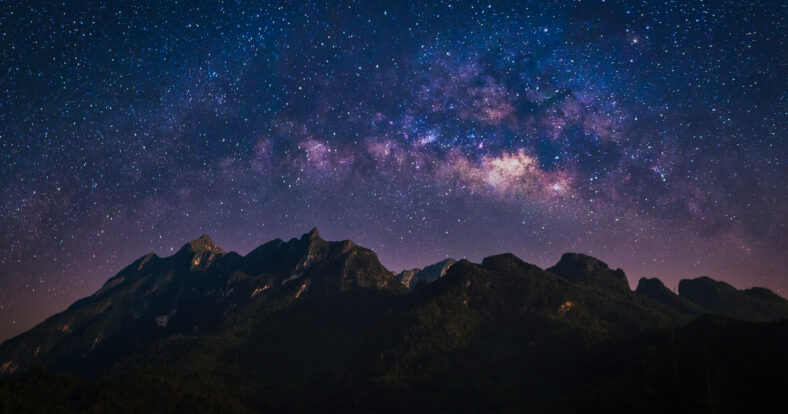The James Webb Space Telescope Has Detected An Impressive Grand Design Spiral Galaxy, And It Was Created Not Long After The Big Bang

The James Webb Space Telescope (JWST) has detected a new grand-design spiral galaxy. It has been named Zhúlóng, after a giant red solar dragon and god from Chinese mythology. It is an incredible size and is the most distant spiral galaxy to be identified.
Grand-design spiral galaxies have prominent arms that circle out from their centers. The general assumption is that these arms are actually overly dense regions of the disk. Star formation is triggered as the material is compressed in those regions.
It is unclear when and how spiral galaxies appeared in the early universe. Usually, the older a galaxy is, the farther away it is.
The age and distance of galaxies can be determined through redshift, a phenomenon that happens when light shifts to redder wavelengths with lower frequency as it travels across space.
Redshift occurs because older stars end up farther away as the universe continues to expand. Red is also the longest wavelength in the visible light spectrum, so faraway stars look redder since they have a higher redshift.
JWST is designed to look deep into the red and infrared spectrum, detecting old, distant galaxies better than any other telescope.
However, spiral galaxies are rare at high redshifts because they are mostly on the younger side. To this day, only a few spiral galaxies have been found at a redshift higher than three.
The newfound spiral galaxy, Zhúlóng, has a redshift of 4.3, meaning that its light has been traveling for more than 12 billion years. It formed about 1.5 billion years after the Big Bang.
According to the researchers who discovered it, Zhúlóng seemed to have formed at a rapid rate. It is still forming stars today, and based on its estimated star formation rate, it has accumulated about 10 billion solar masses in just a few hundred million years. Zhúlóng challenges the idea of how spiral galaxies form.

Sign up for Chip Chick’s newsletter and get stories like this delivered to your inbox.
“The rarity of high redshift spirals might be a consequence of galaxies being dynamically hot at those early epochs,” said Rashi Jain, the lead researcher of the study from the National Center for Radio Astrophysics in India.
“Dynamically hot systems tend to form clumpy structures rather than highly ordered spirals.”
The galaxy may have formed due to the presence of a stellar bar, which are gassy structures that fuel the birth of stars and channel gas between the inner and outer regions of a galaxy.
The spiral may also have formed after two smaller galaxies merged, but this theory seems less likely due to its orderly structure.
Overall, the finding demonstrates that mature galaxies emerged a lot earlier than expected, within the first billion years after the Big Bang.
The details of the study were published in the preprint database arXiv. It has not yet been peer-reviewed.
More About:News





